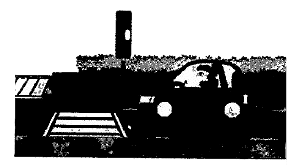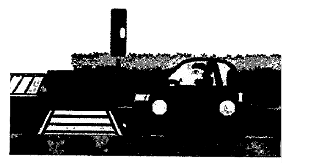Case Study-2 : In our daily life we all see traffic lights. A traffic controller set the timings of traffic lights is such a way that all light are not green at the same time or specially not in the rush hout. It may create problem in an hour because lights are for few minutes only. So, he take the timmings of nearby places in same area and calculate I cm of all traffic stops and he easily manage the traffic by increasing the duration set at different times. There are two traffic lights on a particular highway which shows green light at the interval of 90 seconds and 144 second respectively.
Read the above paragraph carefully and answer the questions that follows:
Find the LCM between two green lights:
720
730
710
740
The correct Answer is:A
To find the Least Common Multiple (LCM) of the two traffic light intervals, which are 90 seconds and 144 seconds, we can follow these steps:
Step 1: Prime Factorization
First, we need to find the prime factorization of both numbers.
- For 90:
- 90 can be divided by 2: 90÷2=45
- 45 can be divided by 3: 45÷3=15
- 15 can be divided by 3: 15÷3=5
- 5 is a prime number.
Thus, the prime factorization of 90 is:
90=21×32×51
- For 144:
- 144 can be divided by 2: 144÷2=72
- 72 can be divided by 2: 72÷2=36
- 36 can be divided by 2: 36÷2=18
- 18 can be divided by 2: 18÷2=9
- 9 can be divided by 3: 9÷3=3
- 3 is a prime number.
Thus, the prime factorization of 144 is:
144=24×32
Step 2: Identify the Highest Powers of Each Prime
Next, we identify the highest powers of all prime factors from both numbers:
- For the prime number 2, the highest power is 24 (from 144).
- For the prime number 3, the highest power is 32 (common in both).
- For the prime number 5, the highest power is 51 (from 90).
Step 3: Calculate the LCM
Now, we can calculate the LCM by multiplying the highest powers of all prime factors together:
LCM=24×32×51
Calculating this step-by-step:
1. Calculate 24=16
2. Calculate 32=9
3. Calculate 51=5
Now multiply these results together:
LCM=16×9×5
Calculating 16×9:
16×9=144
Now multiply by 5:
144×5=720
Thus, the LCM of 90 and 144 is:
LCM=720
Final Answer
The LCM of the two traffic light intervals (90 seconds and 144 seconds) is 720 seconds.
---
First, we need to find the prime factorization of both numbers.
- 90 can be divided by 2: 90÷2=45
- 45 can be divided by 3: 45÷3=15
- 15 can be divided by 3: 15÷3=5
- 5 is a prime number.
Thus, the prime factorization of 90 is:
90=21×32×51
- 144 can be divided by 2: 144÷2=72
- 72 can be divided by 2: 72÷2=36
- 36 can be divided by 2: 36÷2=18
- 18 can be divided by 2: 18÷2=9
- 9 can be divided by 3: 9÷3=3
- 3 is a prime number.
Thus, the prime factorization of 144 is:
144=24×32
Next, we identify the highest powers of all prime factors from both numbers:
- For the prime number 3, the highest power is 32 (common in both).
- For the prime number 5, the highest power is 51 (from 90).
Now, we can calculate the LCM by multiplying the highest powers of all prime factors together:
2. Calculate 32=9
3. Calculate 51=5
The LCM of the two traffic light intervals (90 seconds and 144 seconds) is 720 seconds.
Topper's Solved these Questions
Similar Questions
Knowledge Check
- Question 1 - Select One
When we pass from crossing on a road we all see traffic lights blinking there. A traffic controller set the timmings of traffic lights in such a way that all lights are not green at the same time or specially not in the rush hour, because it can create chaos or problems. So, he take the timings of nearby places in same area and calculate LCM of all traffic stops and he easily manage the traffic by increase the duration or set at different times.
There are two traffic lights on a particular highway which shows green light on time of 90 seconds and 144 seconds respectively.
Calculate their LCM.A720B750C725D700 - Question 2 - Select One
When we pass from crossing on a road we all see traffic lights blinking there. A traffic controller set the timmings of traffic lights in such a way that all lights are not green at the same time or specially not in the rush hour, because it can create chaos or problems. So, he take the timings of nearby places in same area and calculate LCM of all traffic stops and he easily manage the traffic by increase the duration or set at different times.
There are two traffic lights on a particular highway which shows green light on time of 90 seconds and 144 seconds respectively.

Which of the following relation is correct?AHCF (a, b) × LCM (a, b) =ab ?BHCF(a,b)LCM(a,b)=abCHCF (a, b) × LCM (a, b)= a - bDHCF (a, b) × LCM (a, b) = ab - Question 3 - Select One
When we pass from crossing on a road we all see traffic lights blinking there. A traffic controller set the timmings of traffic lights in such a way that all lights are not green at the same time or specially not in the rush hour, because it can create chaos or problems. So, he take the timings of nearby places in same area and calculate LCM of all traffic stops and he easily manage the traffic by increase the duration or set at different times.
There are two traffic lights on a particular highway which shows green light on time of 90 seconds and 144 seconds respectively.

Evaluate the HCF of the timings of two green Lights.A21B18C17D22
Whose fringe width will be more, the one for red light or the one for yellow light, all other things be the same ?
View SolutionYellow light and green light travel at almost the same speed in
View SolutionThe traffic lights at three different road crossings change after every 48 seconds, 72 seconds and 108 seconds respectively. If they all change simultaneously at 8 a.m . Then at what time will they again change simultanously ?
View SolutionThe traffic lights at three different road crossings change after 24 seconds, 36 seconds and 54 seconds respectively. If they all change simultaneously at 10:15 :00 AM, then at what time will they again change simultaneously?
View SolutionThe traffic lights at three different road crossings change after 24 seconds, 36 seconds and 54 seconds respectively. If they all change simultaneously at 10 : 15 : 00 AM, then at what time will they again change simultaneously ?
View Solution

